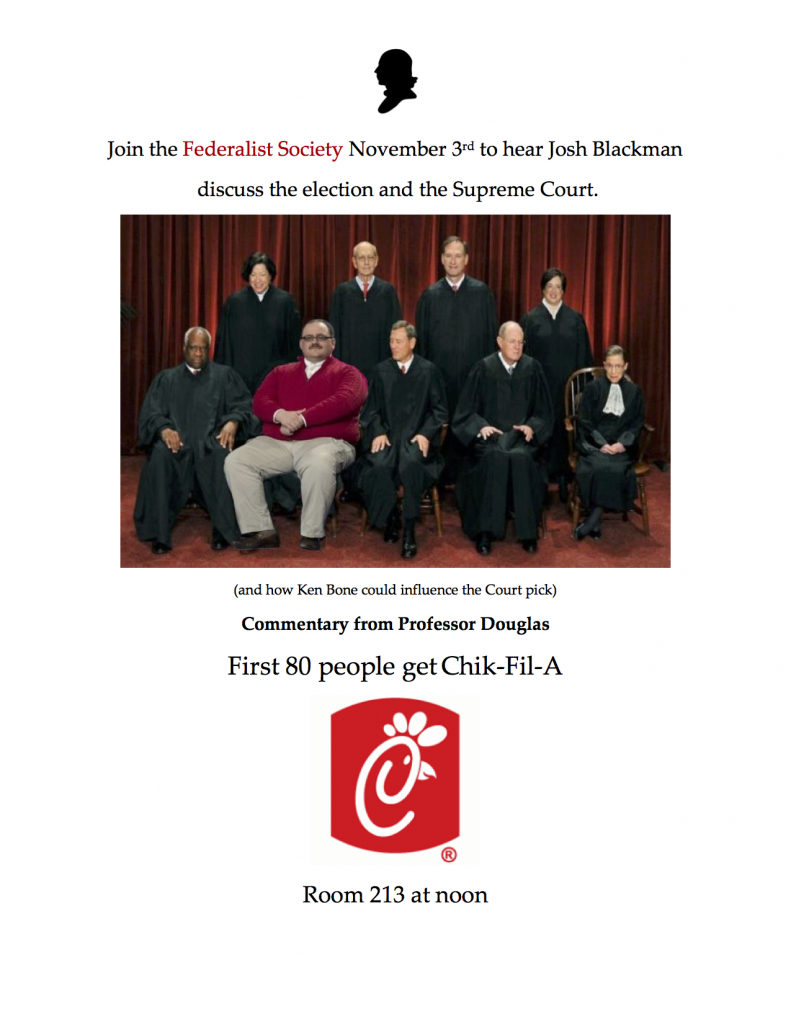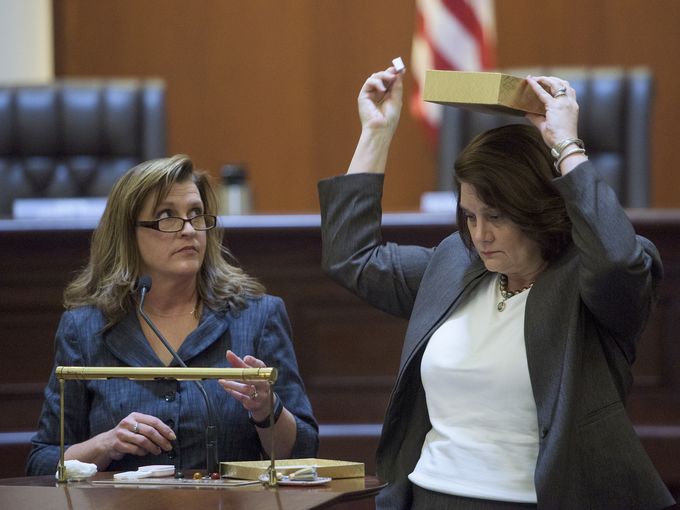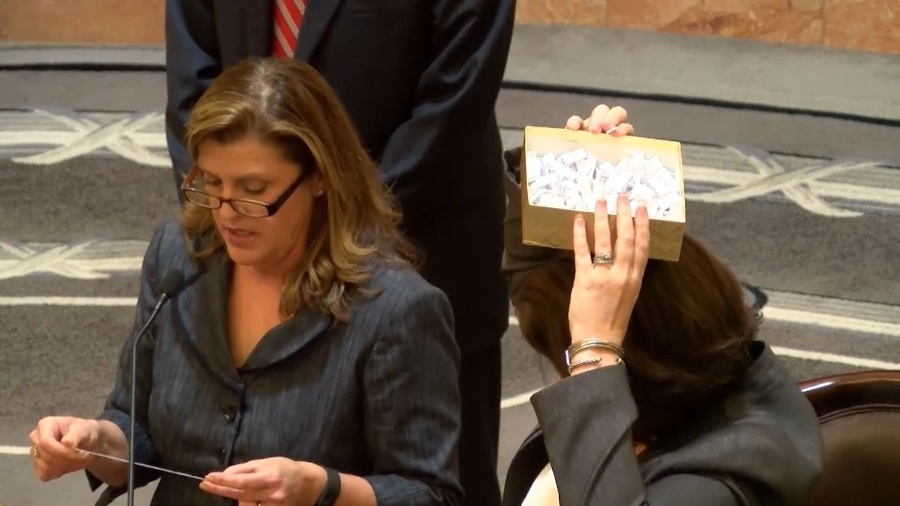As Obamacare continues to unravel, the same genius central planners who got us in this mess now propose a solution to get us out of it. Leading the charge is Jonathan Gruber–yes that Jonathan Gruber–who had this proposal:
“I think probably the most important thing experts would agree is we need a larger mandate penalty.”
From a policy perspective, an increase in the mandate must be accompanied by an increase in the level of subsidies being offered. Often, politicians talk about increasing subsidies as if it has no cost–but it does. All pretenses of the ACA being budget neutral have long since been discarded–especially with the delay-cum-repeal of the Cadillac Tax. So this is not a free solution. Further, the chances of both houses of Congress agreeing to expand the mandate–the single most unpopular aspect of the ACA–is unlikely.
Beyond the policy implications, increasing the mandate raises constitutional problems: under the Chief’s saving construction, if the “tax” becomes too punitive, it is transformed into an unconstitutional “penalty.” Trevor Burrus addresses the issue here.
So could raising the “tax” turn it into a “penalty” and thus make it unconstitutional? Possibly. At some point, the tax would take on a punitive character, and, if people like Gruber get their way, the tax might have to be pretty stiff. With health insurance prices going up, it can still be cheaper to pay the “tax” rather than purchase insurance. And that tax might have to go up a lot to make some people change their minds. If the government ever tries to attach criminal penalties to noncompliance, then the argument is even stronger that it would become an unconstitutional regulation of commerce, given that the Court held that the individual mandate isn’t a valid use of the commerce power.
But we may not even have to wait for the penalty to be increased by statute. On its own terms, certain wealthy individuals may be confronted with the punitive choice in the absence of legislative change.
I wrote about this back in 2014, based on the Epilogue of Unprecedented, and repeat that post here.
In NFIB v. Sebelius, the Chief Justice applied a saving construction to the Affordable Care Act’s penalty, and treated it as a tax, to uphold its constitutionality. (Thom Lambert has a great piece in Regulation Magazine on this topic). But, the Chief Justice placed limitations on the application of the saving construction. The first such limitation stated that because the cost of the “tax” is less than the cost of insurance, a person has a legitimate choice, and there is no coercion:
The same analysis here suggests that the shared responsibility payment may for constitutional purposes be considered a tax, not a penalty: First, for most Americans the amount due will be far less than the price of insurance, and, by statute, it can never be more. FN 8 It may often be a reasonable financial decision to make the payment rather than purchase insurance, unlike the “prohibitory” financial punishment in Drexel Furniture. 259 U. S., at 37.
FN 8 In 2016, for example, individuals making $35,000 a year are expected to owe the IRS about $60 for any month in which they do not have health insurance. Someone with an annual income of $100,000 a year would likely owe about $200. The price of a qualifying insurance policy is projected to be around $400 per month. See D. Newman, CRS Report for Congress, Individual Mandate and Related Information Re-quirements Under PPACA 7, and n. 25 (2011).
Though it is not entirely correct that the “tax” can never be more than the cost of insurance.
The relevant statute is (our favorite) 26 U.S. Code § 5000A. The penalty starts at $95 a month, and will increase to $325 in 2015, $695 in 2016, and will grow with inflation after that. It’s expected to hit $800 a month by 2023. For wealthier Americans, the penalty (when fully phased in) will be even greater, between 1% and 2.5% of income.
(B) Percentage of income
An amount equal to the following percentage of the excess of the taxpayer’s household income for the taxable year over the amount of gross income specified in section
6012 (a)(1) with respect to the taxpayer for the taxable year:
(i) 1.0 percent for taxable years beginning in 2014.
(ii) 2.0 percent for taxable years beginning in 2015.
(iii) 2.5 percent for taxable years beginning after 2015.
Though, this penalty is capped by statute.
The amount of the penalty imposed by this section on any taxpayer for any taxable year with respect to failures described in subsection (b)(1) shall be . . . amount equal to the national average premium for qualified health plans which have a bronze level of coverage, provide coverage for the applicable family size involved, and are offered through Exchanges for plan years beginning in the calendar year with or within which the taxable year ends.
In plain English, this says that the amount of the penalty (not “tax” in case anyone bothered to read the law Congress passed) will not exceed the “national average premium for qualified health plans which have a bronze level of coverage.” So the Chief is wrong to say that the amount will always be less. Why? Because the cost of bronze plans varies by states. In some states it may be more expensive than other. Due to the very nature of an average, in some states it will be above the average, and in some states it will be below the average. In no way can the prices be the same nationwide.
Now it may be true for “most Americans” (those above the average) but not for all Americans (below the average). In fact, the wealthiest Americans, who live in states with the lowest bronze-priced plans, will almost certainly be faced with a false choice–the “tax” will be more expensive than the cost of insurance. 2% of their income will almost certainly be more than the cost of the cheapest bronze plan.
Let’s do some math. CBO projects that the average national bronze plan will be $5,000 a year in 2016. Therefore, if the penalty would be capped at $5,000 a year, who would pay a $5,000 penalty? An individual earning $200,000 a year (200,000 * .025 = 5,000). But what if the cheapest available plan that qualifies under the Affordable Care Act in that person’s state is less than $5,000 a year? Say the cheapest bronze plan is $4,000 a year. Because the statute pegs the penalty to the national average, rather than a local average–and it is impossible to buy across state lines–for some wealthier individuals, there is no meaningful choice.
By it’s very terms, this would seem to run headlong into the Chief Justice’s saving construction, which misstated the nature of the statutory cap. At this point, it would no longer be a “constitutional tax” but an “unconstitutional penalty.”
Certainly, somewhere, there is some wealthy person who stands to pay more under the Obamacare “tax” than insurance would cost. Such a challenge could assert that there are limits on the scope of the penalty.


